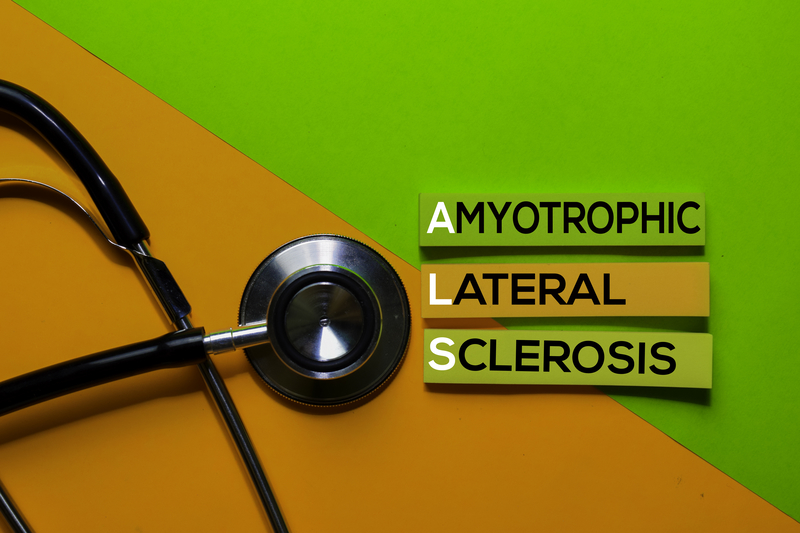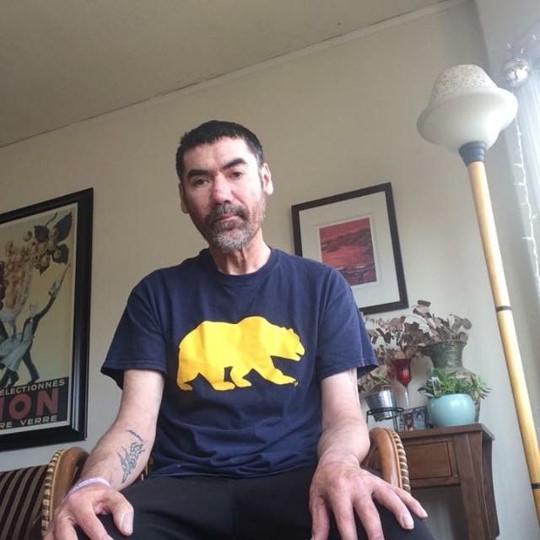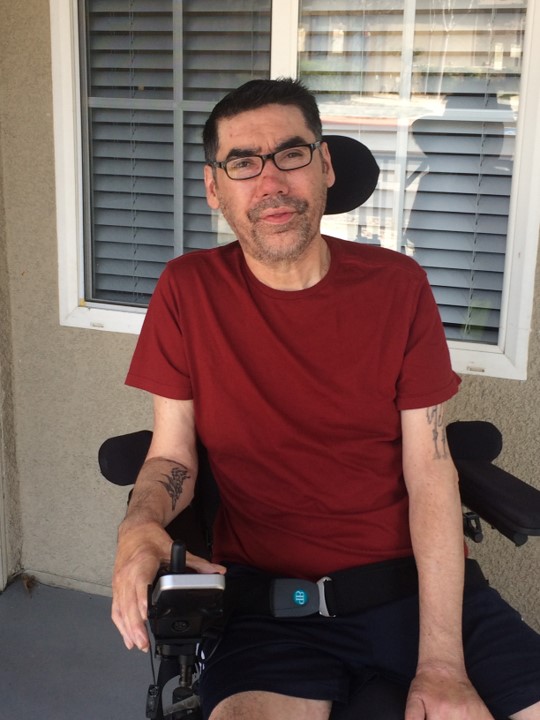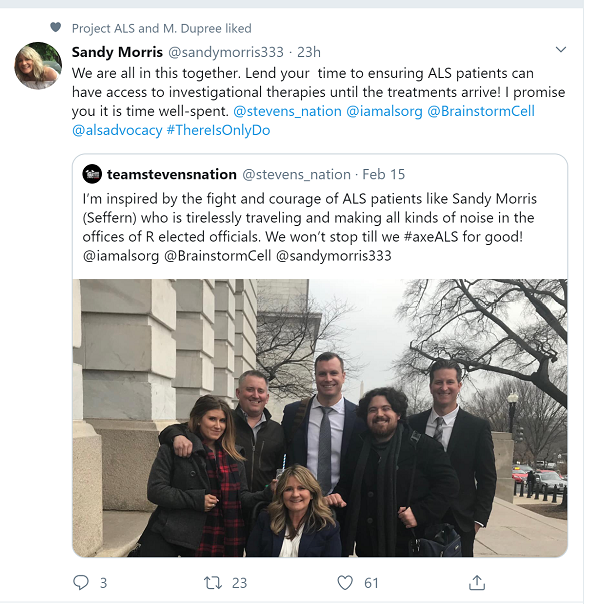If you were to design the cruellest of diseases imaginable, this would be it.
Prof. Dominic Rowe, Neurologist
Macquarie University, Sydney, Australia
What is ALS?

Also known as Lou Gehrig’s disease, ALS is a progressive neurodegenerative disease that originates in the brain and spinal cord. It attacks the motor neurons (nerve cells) that control all voluntary muscles throughout a person’s body, causing muscles to shrink and become paralyzed.
When you have ALS, you gradually lose your ability to move, swallow, speak, and, eventually, breathe.
As you go through the battery of tests needed to diagnose ALS, you find yourself hoping it’s MS, hoping it’s cancer. You pray that it’s pretty much anything but ALS.
Learn more about what you can do.
ALS is 100% fatal. On average, people with ALS (or pALS) live about two to five years after diagnosis; many live a year or less. Mike only had a year and half.
Some go on to live ten or more years, but they are usually very difficult years. Stephen Hawking famously lived a full life for 50 years after his diagnosis, but that’s extremely rare.
Most of us wouldn’t choose to spend life confined to a bed, trached and hooked up to a ventilator, unable to move, eat, or speak. Nor could most people afford the tens of thousands of dollars out of pocket per month required to pay for equipment and round-the-clock care.
No one knows what causes the non-hereditary form of ALS (sporadic), though there are theories floating around about traumatic brain injury and viral infection. The prevailing consensus is it’s a combination of genetic and environmental factors.
One thing we do know is that veterans are twice as likely to get ALS.
The difficulties of diagnosis
Because ALS is considered a rare disease, many clinicians don’t have it on their radar at all, and they often mistake the symptoms for other more benign conditions.
But ALS is not rare — one in 300 will be diagnosed with it at some point in their lives (about the same as multiple sclerosis). Every 90 minutes someone is diagnosed with ALS, while another dies from it. ALS only seems rare because it kills everyone who gets it.
Mike’s diagnosis

So when, in late 2017, Mike noticed sudden weakness in his arms and shoulders that didn’t respond to exercise, and when shoulder pain sent him to the VA’s emergency room, no one including him thought about ALS.
When he uncharacteristically tripped and fell at home (another potential sign of ALS) and his arms didn’t come up to brace him from hitting the couch, a cracked rib sent him back to the ER, but they missed it again.
On a third visit to the ER, this time with level-8 pain in his shoulder and his arms so weak he couldn’t lift a glass of milk to his lips, they sent him home with tramadol, an arm sling, and a referral to orthopedics — for an appointment in four weeks.
A trained medic, Mike knew something else was going on, and he couldn’t wait another month for answers, so once again he made the long trip across the Bay to the VA. At physical therapy he poked his head in and asked to speak to someone. A PT met him out in the hallway. After a quick assessment, the PT told him, “You need to be seen by a neurologist.”
Neurology apparently picked up on it right away and put him through a long day of tests, but it was only when Mike left the clinic and read the discharge paper that he learned what they suspected: “Preliminary diagnosis: motor neuron disease.” No one had said anything to him. This was early January 2018.
Testing continued the next day: X-rays were ordered, then MRIs. Still, no one breathed a word about motor neuron disease or ALS (the most common MND) in his presence. He went home to research in earnest. Like most people, he’d heard of ALS and he knew it was bad, but he didn’t know how bad until he started reading.
Finally, after two more months of tests, scheduling issues, and daily wrangling with bureaucracy, the official diagnosis came over the phone. “I’m very sorry, Mr. Thomson, but it appears that you have amyotrophic lateral sclerosis.”
What does ALS look like?
ALS is different for everyone. Perhaps one of its cruelest aspects is its arbitrary mode of attack. Some pALS lose their speech and ability to eat early on (bulbar onset) but don’t need a wheelchair and have minimal breathing difficulties until much later.
Others start out losing their ability to walk (lower-limb onset), or, like Mike, lose their arm muscles first (upper-limb onset), then everything else quickly follows. Some pALS are completely paralyzed and confined to bed but still have their speech.
As the nerve cells and their signal to each group of muscles begin to die off, like dying stars they first become overexcited and cause twitching throughout the muscles (called fasciculations), then they fade and die completely, essentially starving the muscles and causing them to shrink and stop working.
The effects of failing muscles depend on the muscle group under attack:
- Leg muscles: Trips, falls, difficulty standing from a seated position, wheelchair.
- Arm muscles: Increasing dependence, can no longer drive or feed, bathe, and dress themselves.
- Torso muscles: Inability to turn over in bed or sit up without assistance.
- Tongue, jaw, throat, and vocal chord muscles: More difficult to chew, swallow, and speak.
- Shrinking skeletal muscles cramp, tear, and pull at the tendons that attach to bone.
- Diaphragm muscles: Diminishes ability to take in oxygen and expel carbon dioxide; breathing becomes increasingly labored, fatigue and headaches are common; eventual respiratory failure.
Day-to-day reality

The dry, clinical descriptions of ALS that you read on the internet don’t begin to capture what it looks like up close when someone you love is battling the illness — what they endure, and what you are a witness to. The daily humiliations, the terrors, the loneliness they feel.
Always waiting for the next shoe to drop. What will be next? When will they be unable to swallow? When will their breathing start to go? Knowing that once they lose an ability, it is not coming back. It’s gone forever.
Dr. Rahul Desikan writes about the realities of having ALS. Dr. Desikan (who everyone called Rahul) was a UCSF researcher and beautiful man who Mike respected immensely (the both died on the same day).
We need more and better research
Lou Gehrig died 80 years ago. Since that time, very little has changed for people diagnosed with ALS.
Like Alzheimer’s and AIDS, ALS is likely not just one disease but a cluster of related diseases, with different people responding to different types of treatment.
And because ALS is so devastating and fast-moving and kills everyone who gets it (just as AIDS used to), doing things the old way in terms of research is not only unacceptable — it’s unnecessarily cruel.
ALS clinical trials need to be different
Mike felt very lucky to be able to participate in BrainStorm’s clinical trial and have the chance to receive a stem cell treatment, known as NurOwn, that seems to have shown exciting potential in a few pALS at least. But the jury is still out as the NurOwn trial continues in 2020 and no official data has been released.

As with most ALS clinical trials, the NurOwn study has very strict criteria for participation, and 50% of patients receive placebo — meaning they go through the surgery plus six lumbar punctures, all so that only salt water can be injected into their spinal cord fluid. For someone with fast-progressing ALS, that’s a major gamble.
Mike may have received placebo; we won’t know until the trial finishes and is unmasked.
Even when a therapy passes safety trials and actually helps a small subset of pALS, if the number is not statistically significant, all study halts and the drug does not advance to FDA approval.
Organizations like I Am ALS and people like Cathy Collett, Nicole Cimbura, and Mike’s dear friend Sandy Morris are fighting this uphill battle and making progress with platform trials (where several drugs are studied in one trial) and more humanely designed ALS trials in general.
Several organizations and tireless individuals are working hard to touch hearts and minds and advance research into this complex disease.
Learn, share, donate
VICE on HBO: Die Trying: The Battle for ALS Treatment
Battling ALS herself, VICE editor Angelina Fanous meets with patients and top researchers across the U.S. to find out what’s being done to tackle this devastating disease and the regulatory hurdles faced by ALS patients and drugmakers alike.
ALS Therapy Development Institute
ALS TDI is all about science and research and had Mike’s deepest respect after they proactively contacted him after he was diagnosed to see how they could help.
Project ALS
Founded by pALS Jenifer Estess and her sisters in 1998 (Jenifer died in 2003), Project ALS funds promising research and was among the first to push for stem cell research as a therapeutic treatment for ALS.
Laboratory for Precision Medicine, UCSF
University of California, San Francisco: Neuroscientist Dr. Rahul Desikan, who developed ALS while he was studying it and made massive progress in before he passed away last year, was one of Mike’s heroes (they both died on the same day, July 14, 2019).
- Watch the Good Morning America piece on Dr. Desikan.
- Read one of his moving op-eds in the Washington Post.
- Learn more about his story.
I Am ALS
Brian Wallach, a former Obama staffer, started I Am ALS when he developed the disease in 2017, and he and the organization, which includes dozens of other hardworking pALS (including Mike’s dear friend Sandy Morris), have made a lot of progress on the legislative front.